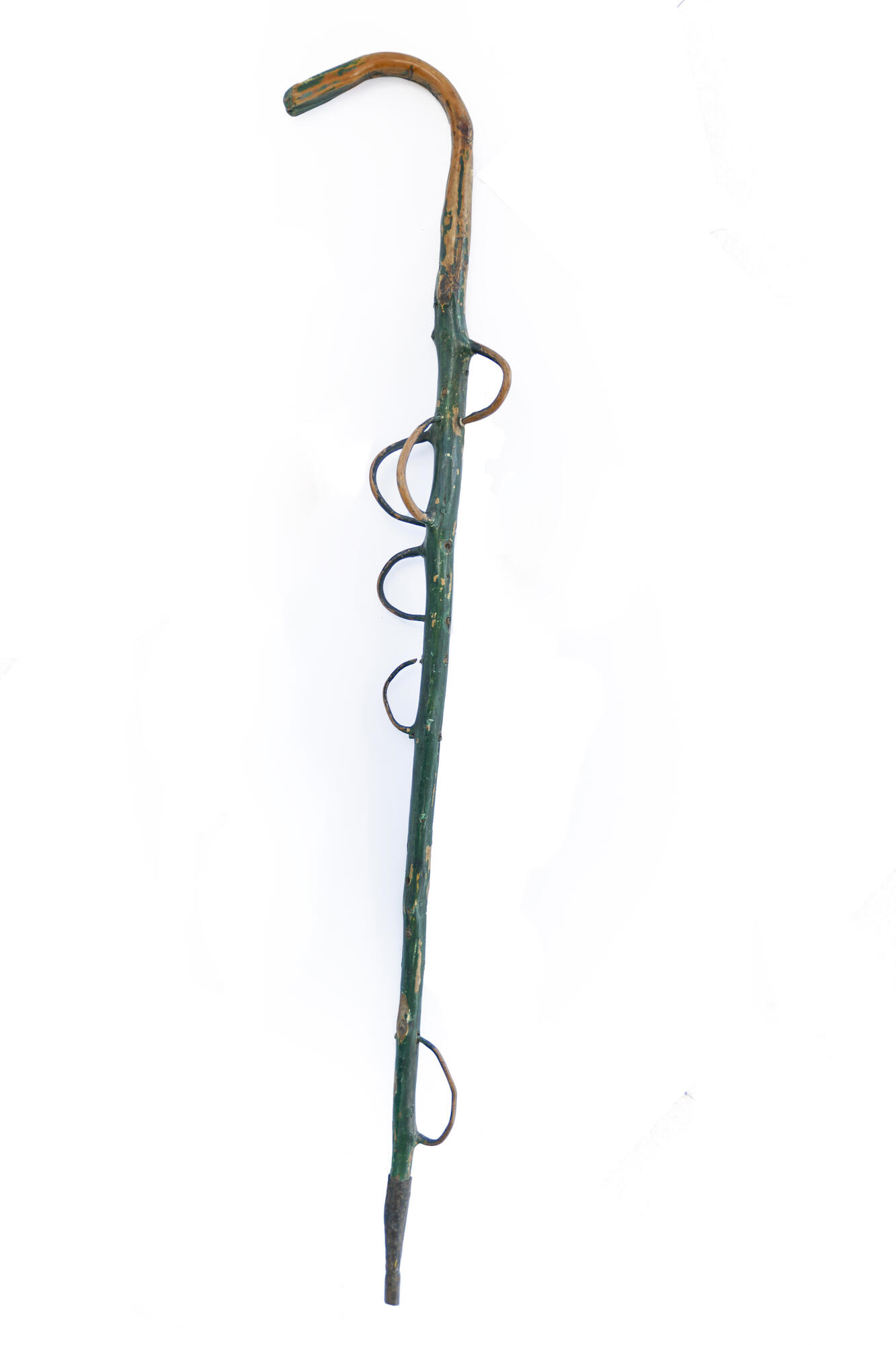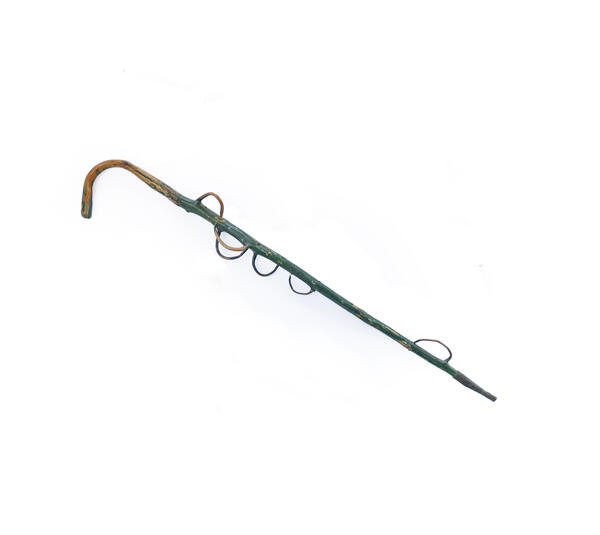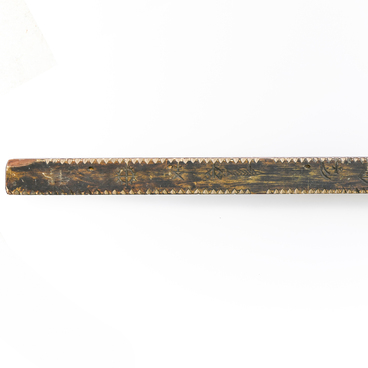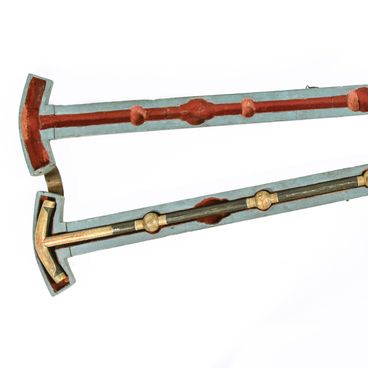The pilgrim’s staff from the collection of the Bishop’s House was made in the 19th century from a single trunk of a small tree. Its surface was given a smooth look and polished, then painted green.
The length of the staff is 70 centimeters. The upper end of the staff is a hook: such a handle was convenient to hold on to when the pilgrim was walking, and when the person stopped for the night or to rest, the staff could be hung on the wall. The stick has six loops at uneven intervals: an unknown artisan made them by bending small branches and securing the loops so that they did not unwind. These loops made it possible to hold the staff at any level of the stick. Sometimes pilgrims would hang lightweight items on these loops, so as not to carry them along in their hands.
The pilgrim’s staffs were not decorated in any way, and most of them had a simple and unsophisticated look. Pilgrims usually made staff sticks on their own, using whatever materials were at hand. Staffs were seldom preserved: they were not considered relics and were not taken care of, and when they got old or broke, they were simply replaced by new ones.
Pilgrims, or palmers, were worshipers who set out on a journey to holy places. People made decisions to embark on such a journey in order to see Christian holy sites, to pray to miraculous icons and ask for health for themselves or their loved ones, to visit the righteous elders and get their advice. People set out on a journey on foot, taking only the basic things — most often only a staff and a small bag with rusk made of bread.
These journeys were often long, difficult, and dangerous: the route did not always follow good, well-traveled roads, the traveler could come across wild animals or bandits, and bad weather could occur. However, Christians saw these difficulties as a way to strengthen their spirit and faith. Some pilgrims described their wanderings in detail. Such notes later became not only spiritual literature but also valuable historical documents.
The staff was a mandatory attribute both of a pilgrim, and also of any traveler who traveled on foot. With its help, it was easier for wanderers to go up and down the mountains, climb over ravines, and protect themselves from dogs or snakes. In addition, the extra support reduced the load on the legs and spine, so the person got less tired.
The length of the staff is 70 centimeters. The upper end of the staff is a hook: such a handle was convenient to hold on to when the pilgrim was walking, and when the person stopped for the night or to rest, the staff could be hung on the wall. The stick has six loops at uneven intervals: an unknown artisan made them by bending small branches and securing the loops so that they did not unwind. These loops made it possible to hold the staff at any level of the stick. Sometimes pilgrims would hang lightweight items on these loops, so as not to carry them along in their hands.
The pilgrim’s staffs were not decorated in any way, and most of them had a simple and unsophisticated look. Pilgrims usually made staff sticks on their own, using whatever materials were at hand. Staffs were seldom preserved: they were not considered relics and were not taken care of, and when they got old or broke, they were simply replaced by new ones.
Pilgrims, or palmers, were worshipers who set out on a journey to holy places. People made decisions to embark on such a journey in order to see Christian holy sites, to pray to miraculous icons and ask for health for themselves or their loved ones, to visit the righteous elders and get their advice. People set out on a journey on foot, taking only the basic things — most often only a staff and a small bag with rusk made of bread.
These journeys were often long, difficult, and dangerous: the route did not always follow good, well-traveled roads, the traveler could come across wild animals or bandits, and bad weather could occur. However, Christians saw these difficulties as a way to strengthen their spirit and faith. Some pilgrims described their wanderings in detail. Such notes later became not only spiritual literature but also valuable historical documents.
The staff was a mandatory attribute both of a pilgrim, and also of any traveler who traveled on foot. With its help, it was easier for wanderers to go up and down the mountains, climb over ravines, and protect themselves from dogs or snakes. In addition, the extra support reduced the load on the legs and spine, so the person got less tired.



